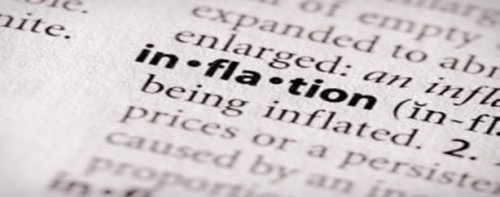What is... inflation?
What is... inflation?
What is... inflation?

Put simply, inflation is a general rise in prices.
When prices of goods and services are on average rising, inflation is positive. Note that this does not mean that all prices are rising, or that they are all rising at the same rate. In fact, if enough prices fall, the average may fall too, resulting in negative inflation, which is also known as deflation.
Inflation 101 – how it is measured
Inflation is typically measured as the percentage change in a representative collection of prices. The most well-known collection is the ‘consumer price index’ (CPI), a measure of the prices of the goods and services that consumers buy each month. The inflation rate is typically quoted as the percentage change on the level of prices from the same month a year ago.
How inflation works in the shops
An inflation rate of 5% per year means that if your shopping costs you $100 today, it would have cost you about only $95 a year ago. If inflation stays at 5%, the same basket of shopping will cost you $105 in a year’s time. If inflation stays at 5% for ten years, this same shopping will cost you $163.
The winners and losers with inflation
Inflation is generally bad news for:
- Consumers - because it means the cost of living is rising. This means that money is losing value, or purchasing power.
- Savers - because it means that the value of savings is going down. When inflation is high, savings will buy less in the future.
It’s good news for:
- Borrowers – because it means that the value of debt is being reduced. The higher the inflation rate, the smaller the burden that future interest payments will place on borrowers’ future spending power.
Strategies to handle inflation
Make sure that you take inflation into account when thinking about your money. Inflation is more disruptive when it is unexpected. When everyone expects it, the impact can be reduced by factoring it into pay deals and interest rates.
For example, let’s say inflation is expected to be 2%. In this case, workers and consumers will not be so worried if their pay is rising at a 5% rate. This is because their spending power is still rising by more than inflation. Similarly, if the interest rate of your savings account is 6%, this still leaves savers’ incomes running ahead of the 2% inflation rate.
The differences between inflation and pay increase and interest rates may seem small but they have a big effect over time. As a result, they can have serious implications for how much money you will have in retirement.
For example, if inflation is only 2% (a rate considered appropriate by many governments) but your wages do not increase, the amount of goods you will be able to buy in 10 years’ time is 22% less than now. In 20 years’ time it would be 49% less and in 30 years 81% less.
Given that most people work for 30 years or more, the effect of inflation on their standard of living over time can be dramatic. Conversely, if you borrow money at a fixed rate for a long period and inflation moves above the interest rate that you are paying, you can save a great deal of money.
The problem for consumers and savers comes when inflation is higher than expected. If inflation jumps to 7% when your pay is only rising at 5% and your savings are only earning 6%, your spending power is declining in what is called “real” terms. As a worker, if you can, ask for more pay, work longer hours or find a higher paid job. As a saver, look for savings products that keep pace with, or grow faster than inflation.
But for borrowers, higher than expected inflation is good news. This is because the interest rates that you are paying may not keep up with inflation. Better still, the trick is to try to lock into low interest rates when they happen to be low by borrowing at fixed rates. That way, you are shielded from any subsequent pick-up in inflation.
Weird World – when inflation goes extreme
At the extreme, inflation can turn into hyper-inflation. When inflation starts to rise at rates of 100%, 1,000% or 10,000%, people rush to spend money before it becomes worthless.
A famous example is Germany in 1923. At the peak of its hyperinflation, prices were doubling every 4 days. The central bank’s printing presses were struggling to keep up by over-printing ever higher denomination bank notes: the highest was the 100,000,000,000,000 Mark note! The resulting economic chaos is widely seen as one of the factors behind the rise of Hitler.
A more recent example of hyperinflation is in Zimbabwe, which has seen prices double every day with an inflation rate of 79,600,000,000%. An interesting table showing the highest inflation rates in history is given in this short article from the Cato Institute. www.cato.org
By Chris Dillow – Investors Chronicle writer and economist.
